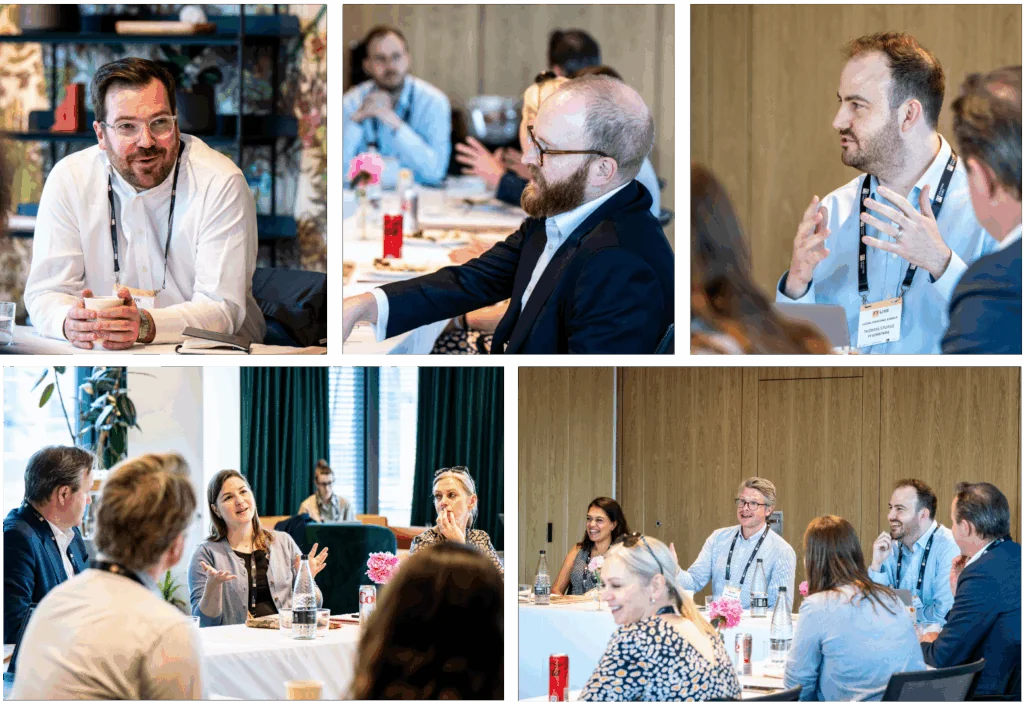
The risk environment, shaped as it is by shifting markets, political volatility, and regulatory complexity, has always been fluid. But today, the tempo has changed. The accelerating pace of technological breakthroughs, geopolitical disruption, and systemic shocks means that risk is evolving faster and less predictably than ever before.
Thought leadership has long been a vital tool for helping companies navigate this complexity. But increasingly, it’s not fast enough. The time it takes to develop, review, and publish high-quality content often means insights land after the market has already moved on.
In our latest roundtable with a group of senior marketers and thought leadership specialists from the risk, insurance, technology and consulting sectors, we explored how organisations can accelerate their approach to risk thought leadership without sacrificing credibility, authority, or strategic value.

Five key themes emerged that are all designed to help organizations deliver insight that leads, rather than follows, the agenda.
1. Speed as a strategic advantage
With markets shifting rapidly in response to geopolitical shocks, AI breakthroughs, and regulatory developments, the traditional timelines for developing thought leadership are proving too slow. Participants described how their teams are re-engineering internal review processes, stripping out unnecessary steps and introducing lighter-touch sign-off models. These “process-lite” approaches are especially effective for short-form or reactive content, allowing firms to publish timely insights while the market is still paying attention.
2. B2B Content strategy: blend the long and the short
To keep up with the pace of change while maintaining authority, many organizations are adopting a dual-track content model. Shorter pieces, such as LinkedIn posts or rapid-response blog posts, are helping brands stay visible and relevant in fast-moving news cycles. At the same time, longer reports remain essential for building credibility and depth, especially when grounded in proprietary research or recurring data sets. The most effective thought leadership strategy now treat these two formats as complementary, using short-form content to seed interest and longer-form content to provide substance.
3. Expert-led storytelling
There is a shift underway from anonymous white papers to more personalized, expert-driven content. Rather than hiding authorship in the small print, organizations are putting their experts front and centre: named contributors, first-person point of view, and direct amplification via social media. This isn’t just about visibility. It’s about trust. When audiences can see and engage with the people behind the ideas, they are more likely to see the content as credible and worth sharing. For many firms, expert advocacy is becoming as important as authorship itself.
4. Content with purpose (and metrics)
There is growing recognition that not every piece of thought leadership needs to do everything. Instead of producing catch-all content, firms are defining more focused objectives from the outset, whether that’s driving earned media, generating leads, or supporting internal campaigns. This clarity of purpose is making it easier to measure what success looks like and to identify which types of content deliver the most value. The result is a more disciplined and outcome-driven approach to thought leadership investment.
5. Activate the internal audience
Internal teams are often among the most effective amplifiers of thought leadership, but only if the content resonates with them. To increase internal engagement, organizations are starting to personalize how content is distributed, using smarter tools that help employees surface pieces that are relevant to their clients, sectors, or geographies.
Success here depends not just on access, but on alignment. When content reflects the priorities of internal stakeholders, it is far more likely to be shared, championed, and put to work in conversations that matter.
Staying sharp in a faster world
It’s a paradox. Risk insight has never been more essential, but it’s never been harder to cut through. The pace of change is relentless. Audiences are time-poor. And trust in generic content is wearing thin.
Yet this only heightens the value of great thought leadership. When done right, thought leaders filter the noise, brings clarity to complexity, and gives decision-makers the confidence to act. That’s especially true in the risk space, where the target audience craves real world perspectives, not platitudes.
If anything, this roundtable reinforced a core truth: speed and substance aren’t mutually exclusive. The future of risk thought leadership belongs to those who can move fast while still saying something that matters.
Sign up to the newsletter
We help organisations stand out, speak with authority and spark inspiration, so change can happen. That’s real intelligence with influence. Sign up to our newsletter to get regular updates.
Subscribe






 Back
Back

 Book a meeting
Book a meeting
 Book a meeting
Book a meeting


 View Thomas’s profile
View Thomas’s profile

